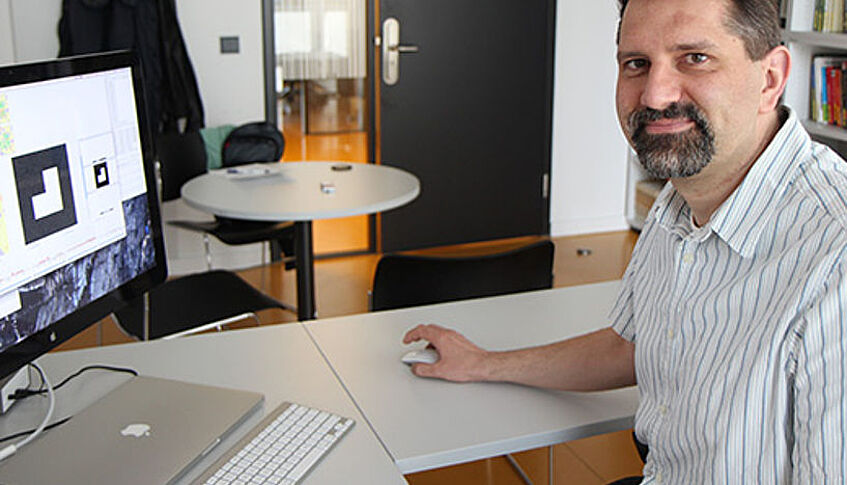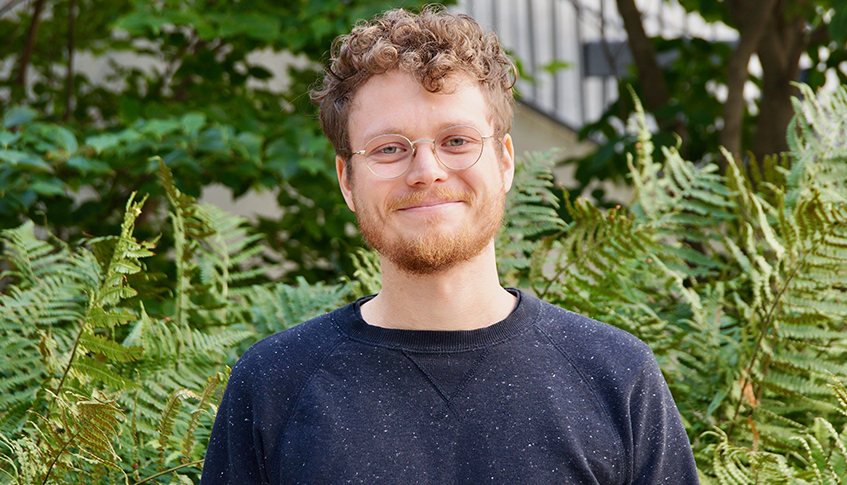Team
- PI: João Alves • joao.alves@univie.ac.at • u:find
- Co-PI: Torsten Möller • torsten.moeller@univie.ac.at • u:find
- Post-Doc Researcher: Sebastian Ratzenböck • sebastian.ratzenboeck@univie.ac.at • u:find
- Administrative Coordinator: Petra Schönfelder (she/her) • petra.schoenfelder@univie.ac.at
João Alves

João Alves
João Alves is a professor of Stellar Astrophysics and researcher on the origins of stars and planets. He has developed a new technique to trace density and mass distribution inside giant molecular clouds, the nurseries of star and planet formation, and is a leader on the structure of stellar embryos and the origin of the observed distribution of stellar masses in the Universe. He has co-authored more than 200 papers in peer-reviewed journals that have amassed more than 20,000 citations.
João did his PhD thesis work at the Harvard-Smithsonian Center for Astrophysics in Cambridge, Massachusetts. He moved in 1999 to Germany to become a European Southern Observatory (ESO) Fellow to Garching. In 2001 he became ESO staff and Head of Visiting Astronomers Section in 2003, where he was in charge of managing the scientific evaluation of ESO proposals and time allocation. In 2006 he moved to Southern Spain to take the directorship of the Max-Planck - CSIC German-Spanish Astronomical Center in Calar Alto.
Since 2010, João is full professor for Stellar Astrophysics at the Department of Astrophysics of the University of Vienna. From 2018 to 2019 he was Fellow at the Harvard Radcliffe Institute. He is involved in the European ESA Gaia satellite mission and in the data simulation from the planned European Extremely Large Telescope (ESO-ELT). In 2019 he joined the research network Data Science @ Uni Vienna as board member.
Torsten Möller

Torsten Möller
Torsten Möller is an expert on visual data analysis and has been investigating the visual exploration of data-driven und computational models for nearly a decade. He has been given several keynote talks on this issue and has a number of highly cited papers on the issue. He heads the research group on Visualization and Data Analysis. He served as the appointed Vice Chair for Publications of the IEEE Visualization and Graphics Technical Committee (VGTC) between 2003 and 2012.
Torsten has served on a number of program committees and has been papers co-chair for IEEE Visualization, EuroVis, Graphics Interface, and the Workshop on Volume Graphics as well as the Visualization track of the 2007 International Symposium on Visual Computing. He has also co-organized the 2004 Workshop on Mathematical Foundations of Scientific Visualization, Computer Graphics, and Massive Data Exploration as well as the 2010 Workshop on Sampling and Reconstruction: Applications and Advances at the Banff International Research Station, Canada. He is a co-founding chair of the Symposium on Biological Data Visualization (BioVis).
In 2010, Torsten was the recipient of the NSERC DAS award. He received best paper awards from IEEE Conference on Visualization (1997), Symposium on Geometry Processing (2008), EuroVis (2010), and ACM Intelligent User Interfaces (IUI, 2016), as well as two second best paper awards from EuroVis (2009, 2012). In 2016 he received the Teaching Award from the University of Vienna. Torsten is founding board member of the research network Data Science @ Uni Vienna and its current speaker.
Sebastian Ratzenböck

Sebastian Ratzenböck
Sebastian Ratzenböck is a PostDoc researcher with a background in physics. He received his master's degree in Technical Physics at the Vienna University of Technology. During his master's program, he focused on the union of applied data science and physics and helped analyze data from three scientific projects, including a dark matter search experiment and high energy particle physics experiments at the LHC, CERN.
During his PhD at the research network Data Science @ Uni Vienna, he developed interpretable machine learning methods to uncover previously unknown stellar groups in the Milky Way. Equipped with these new tools, his research goal is to create Altas Galaxia Proxima, a high-precision complete catalog of these stellar groups giving us insight into the recent star formation history of the local Milky Way.
